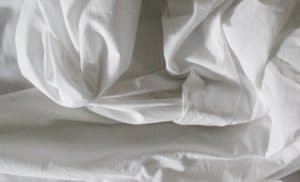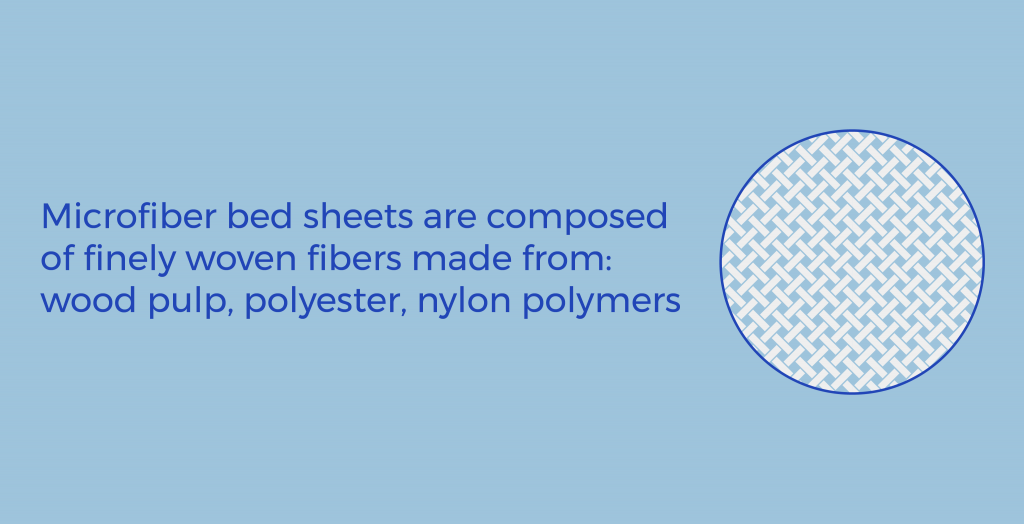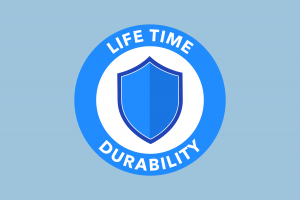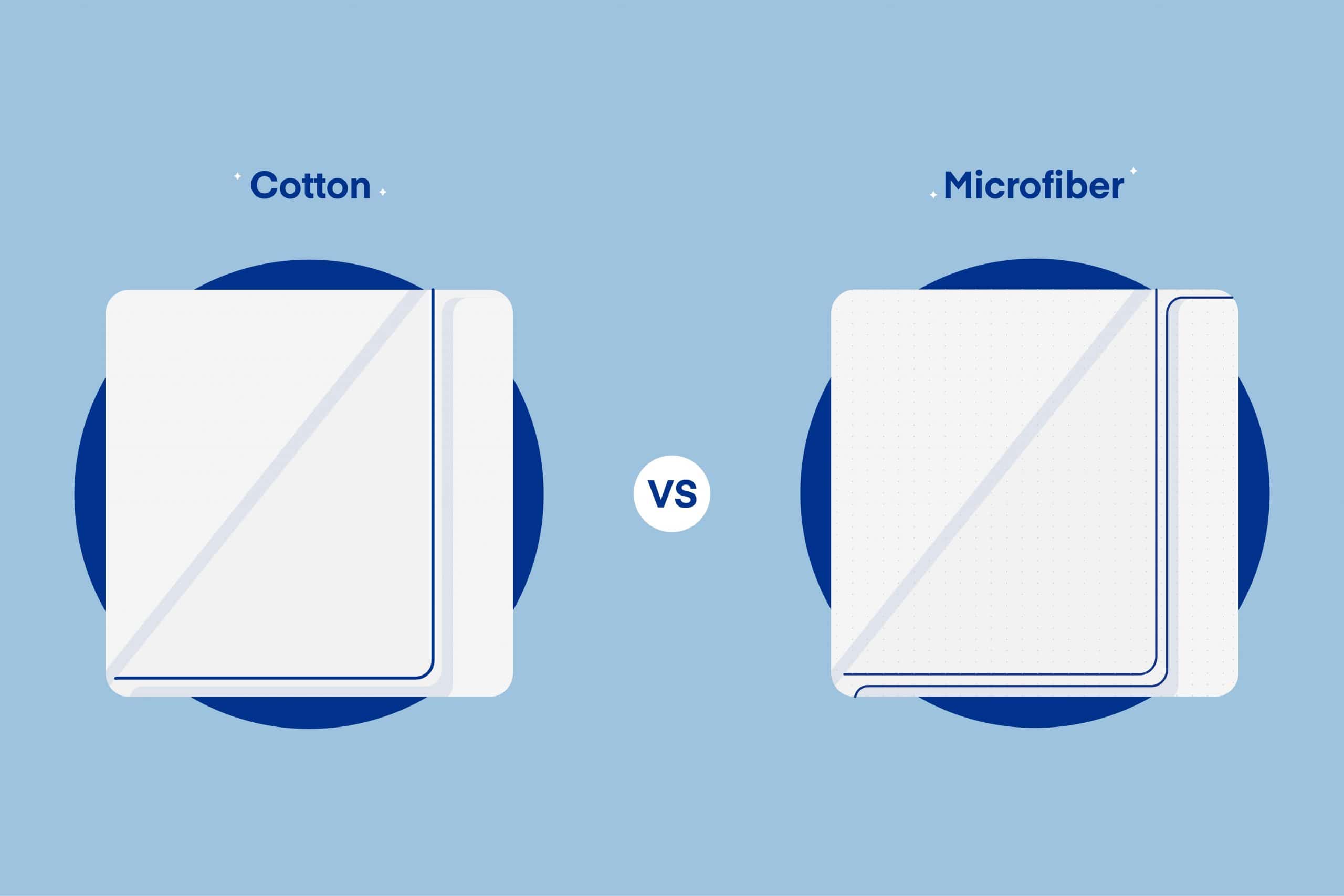Key Takeaways
- Material Differences: Cotton is a natural fiber harvested from cotton plants. Cotton sheets can vary based on factors like the length of cotton fibers (staples) and the weave. Longer staples typically result in softer and more durable sheets. Egyptian cotton and Pima cotton are examples of long-staple cotton. Microfiber sheets are made from finely woven synthetic fibers, often from materials like wood pulp, polyester, or nylon. Microfiber sheets are known for being soft, affordable, and less likely to wrinkle.
- Feel and Comfort: Cotton sheets have a soft, crisp, and fresh feel, which tends to get softer with each wash. The feel can vary based on thread count, with higher thread counts generally resulting in softer sheets. Cotton is breathable and suitable for sensitive skin. Microfiber sheets have a smooth and slippery feel, similar to silk or satin. They are soft and lightweight but can trap more heat compared to cotton, making them suitable for colder climates.
- Durability and Maintenance: Cotton sheets with higher thread counts are generally more durable and can last longer. Cotton sheets are low-maintenance, can be machine-washed with ease, are resistant to pilling, and tend to become softer over time. Microfiber sheets with a flat weave are durable and can withstand frequent washes without deteriorating. They are less likely to wrinkle or shrink. However, some types of microfiber may feel staticky after washing, and waffle-patterned microfiber can be prone to moisture absorption and staining.
Good bed sheets are essential when it comes to getting comfortable sleep. Not only do bed sheets affect your comfort, but they also protect your bed sheets from stains, wear, and moisture. If you’ve spent a lot of money buying a great mattress, be sure to buy good sheets to help keep it clean.
Two popular types of bed sheets include cotton and microfiber. Cotton is a natural fiber harvested from cotton plants, while microfiber is made up of synthetic materials such as polyester or nylon.
So which is better, microfiber or cotton sheets? We break down the distinct differences between cotton and microfiber sheets so you get a better idea of which works better for you and your mattress.
What are Cotton Sheets?
Cotton is a durable, natural fiber harvested from cotton plants. Civilizations have harvested and used cotton for thousands of years and even today, it’s one of the most popular fabrics.
Although it may not seem like it, cotton is a very versatile material. Based on how the cotton bedding is treated after being harvested, it can either feel soft or rough and be durable or weak.
Types of Cotton Bed Sheets
The best cotton sheets generally have longer staples, meaning the cotton fibers are longer and finer, yet still durable. Having such fine cotton means the fabric turns out softer. Some examples of long-staple cotton sheets include Egyptian cotton and Pima cotton. These types of sheets generally have higher thread counts, meaning there is more cotton per square inch of fabric.
Cheaper cotton sheets feature short staples and the most common type is Upland cotton. Short-staple sheets generally feel coarse, scratchy, and are at a higher risk of sheets pilling. Shorter-staple cotton is less fine and has a lower thread count than long-staple cotton.
Aside from how long the fibers are, how the fabric is treated can also affect its durability. Organic and natural cotton sheets have a reputation for greater longevity, compared to fibers that have been chemically treated.
Lastly, there’s also the cotton sheet’s weave to consider. You will likely hear of percale vs. sateen weave when you’re browsing cotton sheet sets. There’s also the flannel weave used for cold weather sheets and clothing, and the twill weave usually reserved for upholstery and denim.

Pros of Cotton Sheets
- Available in countless varieties, both affordable and luxurious
- Natural fabric
- Good for people with allergies
- Low maintenance
- Durable
- Breathable and moisture-resistant
Cons of Cotton Sheets
- Potentially inflated thread counts
- Some variations are expensive
Best Cotton Sheets: Amerisleep Percale Cotton Sheets

Those looking for a durable and cooling set of sheets should check out the Amerisleep percale cotton sheet set. These 300-thread-count, 100 percent cotton sheets feature a highly breathable percale weave that allows maximum airflow.
The percale weave follows a grid pattern that puts one-thread-under and one-thread-over. That creates a matte finish and a cool, crisp feel. Whereas sateen weave tends to feel more silky and soft. Percale weave allows for tons of air circulation. That means these cotton sheets help keep air flowing around your body even as they absorb moisture and wick it away.
The long-staple cotton fibers featured in these sheets also give them greater durability ands well as breathability. That means you can machine wash them on the gentle cycle without worrying about pilling or tearing. The great thing about cotton sheets is they get even softer every time you wash them!
Another wonderful feature of these sheets is their deep pockets. Many fitted sheets tend to slide around mattresses or even slide off them because they don’t wrap all the way down and around the bottom of the mattress.
However, deep-pocketed sheets hug your mattress, gripping the underside. Deep pockets are fantastic for all mattress thicknesses. However, they’re absolutely essential for deep mattresses. If your mattress is over 12 inches tall, you likely won’t be able to keep a sheet set with regular pockets on it.
The Amerisleep cotton percale sheets have a quality feel similar to luxe hotel sheets, without the luxe hotel price. These sheets range from $110 to $180, depending on their size. They also come in four colors.
Recommended For:
- Hot sleepers
- Couples
- Active sleepers
Best Features:
- Deep pockets keep the fitted sheet in place.
- A percale weave maximizes cooling airflow.
- The long-fiber cotton is tough and soft at the same time.
What are Microfiber Sheets?
Microfiber bed sheets are composed of finely woven fibers made from wood pulp, polyester, or nylon polymers. They’re affordable and soft, yet they’re more durable than traditional polyester sheets. As a synthetic fabric, microfiber is less likely to wrinkle or shrink compared to all-natural fabrics like cotton.
Microfiber is measured by its denier, or each fiber’s thickness. A fabric’s denier must be less than 1 denier in diameter to be considered microfiber.
A microfiber sheets’ weave affects its durability and quality. Microfiber sheets with a flat weave are durable, resistant to stains, and repel moisture. Conversely, microfiber sheets with a waffle weave are highly absorbent and trap heat, which isn’t a reliable bed sheet.
Still, sleeping on microfiber is an all-around good choice if you want soft and smooth sheets, but don’t want to pay a high price. Good-quality microfiber sheets with a flat weave are good on a child’s bed in case of accidents, and adults can enjoy the feel of its velvety texture at an affordable price.



Pros of Microfiber Sheets
- Low maintenance
- Flat, tightly woven microfiber is durable
- Soft and lightweight
Cons of Microfiber Sheets
- Absorbs moisture
- Prone to stains
- Staticky
- Traps heat
- Waffle-patterned microfiber is prone to moisture
How to Choose Between Cotton and Microfiber
Choosing between cotton or microfiber might be a bit difficult. We recommend weighing the pros and cons between both types of sheets, but also considering their feel, durability, maintenance needs, and price.
Feel and Comfort



Based on the thread count of the cotton sheets, they’ll feel either softer or rougher. Higher thread counts typically feel softer, while lower thread counts feel rougher. Thread count can also affect how airy a sheet feels, though cotton is still naturally breathable regardless.
Microfiber has a smooth and slippery feel, similar to silk or satin. With this in mind, microfiber tends to trap more heat compared to cotton. The heat retention can be great if you live in a colder climate, or if it’s wintertime. Otherwise, it can get uncomfortable, particularly if you struggle with night sweats or a similar condition.
This difference can also come down mositure absorbence vs. pure moisture wicking properties. Cotton lets droplets seep inside, but it doesn’t feel wet due to the way the fibers trap moisture for later evaporation.
Microfiber is much less absorbent, leaving the moisture to move along the surface until it evaporates. However, if sweat and such gets trapped under a sleeper’s body, then this can create an uncomfortable puddle.
Durability



Microfiber sheets with a flat weave fare better long-term than microfiber sheets with a waffle weave. They can withstand frequent washes without deteriorating or pilling. Flat weaves are also less likely to wrinkle or shrink when washed and dried.
Maintenance



Unless the sheets clearly state having other care needs, it’s safe to assume they’re machine washable. However, be sure to check the laundry care instructions first.
With this in mind, microfiber is more likely to feel staticky after being washed and dried. Microfiber with a waffle weave is also more likely to absorb moisture and it can be hard to remove stains. Some types of microfiber may also need to be washed on a low-temperature setting.
There’s also the special care that white sheets require, as they will show sweat stains moreso than a set of colored sheets. These sheets will eventually yellow with age, leaving you to whiten sheets to restore their look.
Price



However, remember that a sound investment is about more than you just pay, it’s also about how long a product lasts. If you pay a lower price for the sheets but you have to replace them sooner, it may not be worth the cost.
Environmental Impact



However, when it comes to cotton sheets, not all are created with equal sustainability. Cheaper cotton sheets may have chemical treatments during production that higher-priced organic cotton sheets do not. If you want to be sure you’re purchasing a set of organic sheets, look for a certification like the Global Organic Textile Standard (GOTS).
More Types of Sheets to Consider
- Bamboo vs. Tencel Sheets: What’s the Difference?
- Bamboo vs. Cotton Sheets: What’s the Difference?
- Tencel vs. Cotton Sheets: What’s the Difference?
- Lyocell vs. Cotton Sheets: What’s the Difference?
When Should I Replace My Bed Sheets?
Generally, you should replace your bed sheets every 2 to 3 years. This includes your pillowcases, fitted sheets, and flat sheets. The exact lifespan of a set of bed sheets depends on what type of fabric it’s made of.
Some signs of wear to keep in mind include:
- Thinning
- Yellowing or discoloration
- Fading colors
- Pills on the fabric
In general, you can extend the life of your bedding by washing sheets regularly and following the laundry care instructions.
FAQs
What cotton thread count is best?
Thread count refers to the number of threads within a square inch of fabric. Generally, a good thread count of cotton sheets is between 200 to 600 and the sheets will be soft, durable, and smooth.
When it comes to cotton sheets, some brands inflate their thread counts of the sheets to seem more luxurious. In reality, manufacturers layer thin, low-quality pieces of cotton. So while the thread count can be 800 or higher, the brittle, thin fibers mean it’s not a better quality sheet compared to thread counts between 200 to 600.
Do hotels use cotton or microfiber sheets?
Hotels use all sorts of sheets in their bedrooms, but the ideal fabric should be durable and easy to care for. Generally, most hotels have cotton and linen sheets in their bedrooms since both fabrics are durable, breathable, and low maintenance. At the same time, they have a crisp and luxurious feel.
Microfiber sheets simply can’t withstand the amount of wear and tear they’d receive at a hotel. They also aren’t as breathable as cotton or linen, which may not be as comfortable.
How often should you replace your bed sheets?
It can be smart to consider replacing your sheets as early as after two years of use, particularly if you use them daily and don’t swap them out with another set. However, it’s not uncommon to get three to five years out of a set of good sheets, especially if you take good care of them.
As long as the sheets look nice, feel good, are free of any unpleasant smells and have minimal signs of wear (no holes, pilling, etc.), then you can continue to use them as you wish.
How many sets of bed sheets should you own?
It’s best to have two or three sets of bed sheets per bed, especially if you tend to sleep hot and sweat throughout the night. This way, you won’t have to constantly wash your bed sheets if you sweat frequently, or if the bed is for a child who sometimes has accidents.
Another reason to have multiple sheets is that on laundry day, you always have an extra set of sheets ready to use.
What is the best material for sheets to keep you cool?
Some of the best types of bed sheets for hot sleepers include cotton, Tencel™ sheets (cellulose), and linen bedding. They’re all smooth and moisture-wicking so you don’t end up sleeping in your sweat. Some other types of sheets sometimes can be moisture-wicking and cool as well, but these are the most reliable in terms of being consistently cool.
Conclusion
Never overlook the importance of a good quality sheet. It’s always easy to choose whatever’s cheapest, but we implore you to learn about different types of sheets—like cotton and microfiber—to truly figure out what will best fit your preferences. Just going with a cheap, random option can leave you constantly uncomfortable and hot at night.
Both cotton and microfiber sheets are soft and cozy, but their cost and durability can help you decide which of the two will help you achieve your ideal sleep environment.
About the author
April Mayer is a sleep expert and writer with a degree in exercise physiology. She has dedicated her career to exploring the relationship between sleep and productivity. Her insightful articles, such as "The Surprising Way Your Mood Might Be Messing With Your Productivity" and "Wake Up to More Productive Mornings," have been featured in reputable publications like Forbes, Greatist, Real Homes, Thrillist, Tom's Guide, and Eat This, Not That. With a passion for helping others lead more productive lives through restful sleep, April offers valuable expertise on foods and vitamins for better sleep. As a trusted member of the Early Bird team since March 2020, she continues to provide informative and well-researched content.
View all posts





